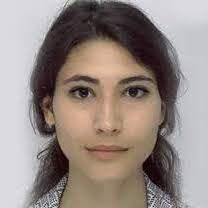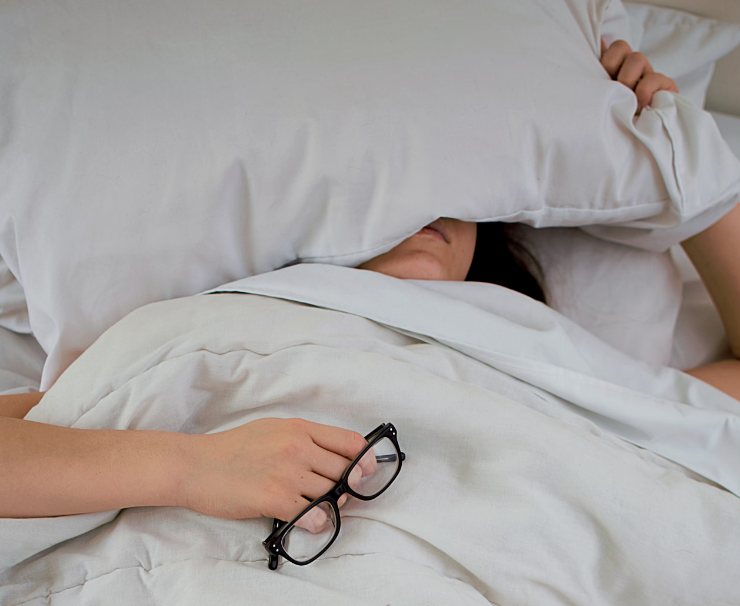Article
Insomnia Driven by Behavioral, Sleep Modifications, Light Exposure During COVID-19
Author(s):
A cross-sectional analysis from the France COVID-19 lockdown period resulted in a predictive model for insomnia risk.
Nausicaa Christodoulou

Insomnia symptom development during the COVID-19 pandemic was associated with lifestyle modifications including reduced social contact, exposure to noisy environments, irregular sleep schedule and increased anxiety and depression severity, according to a new study.
In new data from a cross-sectional analysis of a French online survey conducted during the 2020 COVID-19 national lockdowns, a team of investigators observed that lifestyle factors including the ones above as well as screen exposure and LED lighting may be inherently linked to insomnia’s physiopathology.
As such, the observations of both clinical and non-clinical factors of initial insomnia collected during a high-risk period such as the pandemic may inform behavioral and medical strategies to mitigate sleep health burdens in susceptible patients.
Led by Nausicaa Christodoulou, of the University of Paris, investigators used data from the Covid-RhythmE trial to distinguish primary factors linked to insomnia symptom onset during the COVID-19 lockdown periods, with consideration to French residents’ alterations to daily lifestyle and behavior. The team additionally sought to create a predictive model for insomnia symptoms.
As the team wrote, insomnia’s currently understood pathophysiology and neurobiology involves a homeostatic process of sleep drive or duration of wakefulness as well as the circadian timing system; the latter is dependent on daylight exposure and various social and environmental “timekeepers.”
“This neurobiology is also very sensitive to stress and has bidirectional links with psychiatric disorders such as anxiety and depression,” they explained. “The hyperarousal, possibly caused by stress, appears to be one of the main actors leading to insomnia.”
It comes as little surprise that the COVID-19 pandemic and its stressors were associated with major increases in sleep and psychiatric disorders globally. Christodoulou and colleagues added that measures themselves to combat the pandemic—from social distancing to government-mandated curfews and limited outdoor exposure—may additionally have generated lifestyle and behavioral changes that would leave individuals susceptible to insomnia and other conditions.
“Some studies reported interesting positive correlations between insomnia symptoms and factors such as occupation, and symptoms of anxiety or depression,” the team wrote. “However, none of them have explored the associations with specific modifications of the daily routine induced by a strict lockdown which can be seen as an almost free running state on a massive scale.”
Investigators used data from their Covid-RhythmE survey, which assessed sleep and circadian rhythms in general population individuals during the French COVID-19 lockdowns of 2020; they reported at the time that 51.0% of surveyed participants had mild to severe insomnia per Insomnia Severity Index (ISI) scores ≥8.
The survey also collected sociodemographic characteristics, work status, sleep schedule regularity, bedtime and wake-up intervals, physical activity, morning and evening light exposures, meal intervals, weight gain or loss and social contact parameters—each variable measured before and during the COVID-19 lockdown.
Of the observed 1600-plus participants in this analysis, 821 (50.64%) had insomnia. Patients with insomnia were more likely to be aged 26 - 65 years old (41.2%), female (39.96%) and actively working (39.16%). Additionally, patients with ≤4 persons in their household (44.95%) during lockdown, those without outdoor exposures (39.59%) and those who sleep in a noisy environment were more likely to have insomnia.
Investigators additionally observed increased risk of insomnia in participants who reported change to their sleep schedules (odds ratio [OR], 1.16), as well as those with anxiety (OR, 9.49) or depression (OR, 6.29) per Hospital Anxiety and Depression Scale (HADS) scores (P <.0005 for all).
Indeed, the team concluded the variables of a predictive model for insomnia risk based on the survey findings would include older age, female sex, sleep in a noisy environment, less regular sleep schedules, longer screen exposure, loner evening LED light exposure, and HADS scores for anxiety and depression. These variables combined would provide a 74.3% accurate prediction for insomnia symptoms in undiagnosed patients.
“This study emphasizes that the COVID-19 pandemic and the associated lockdown had a major impact on our way of living,” investigators wrote. “All the population, except for workers who could not work at a distance, had to stay at home and thus had to create new routines.”
Christodoulou and colleagues wrote that lifestyle schedule, daily routines and environmental changes seem to each be “primordial in the development of insomnia symptoms.”
“These factors are to be considered in the comprehension, prevention, and treatment of insomnia as well as the associated mental health status,” they concluded.
The study ,”Factors associated with insomnia symptoms: A cross-sectional study during a Covid-19 fully restrictive lockdown,” was published online in Journal of Sleep Research.





